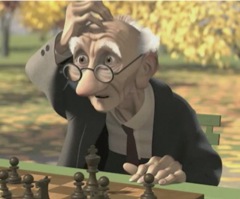
Subdivision Surfaces
Uldarico Muico
Geometric
modeling using subdivision surfaces is one of the major topics
discussed this quarter. It is a way of generating smooth surfaces using
polygons. At the same time, it provides the means for controlling
surface features in an intuitive manner. The purpose of this project is
to implement a couple subdivision schemes.
The
first scheme I chose to implement is the Loop scheme. This is a
non-interpolating subdivision scheme that works on triangular meshes.
This produces surfaces that are C2-continuous on regular meshes.
The first task is to design a good user interface. Fortunately, we have some existing skeleton code
from a previous quarter. Unfortunately, it is outdated and requires
migration to FLTK for consistency with our previous projects.

Winter 2007
User Interface
Subdivision Schemes
CSE 557 Final Project

To Be Implemented





The
second method is the butterfly subdivision scheme. This is also suited
for triangular meshes, but the method is interpolating. This produces
surfaces that are C1-continuous on regular meshes.

polygonal
Loop
Butterfly
Creases and Corners
Another
aspect of these subdivision schemes is the ease of adding creases and
corners on the surface. This project also provides support for these
features.



Of course, there are many improvements we can make to this project if we had more time. Here are a few.
1. Other schemes (e.g. Doo-Sabin, Catmull-Clark)
2. Adaptive subdivision.
3. Texture mapping.
4. Editing the topology of the base mesh.
5. Editing the surface vertices.

References
1. Denis Zorin and Peter Schröder, Subdivision for Modeling and Animation, SIGGRAPH 2000